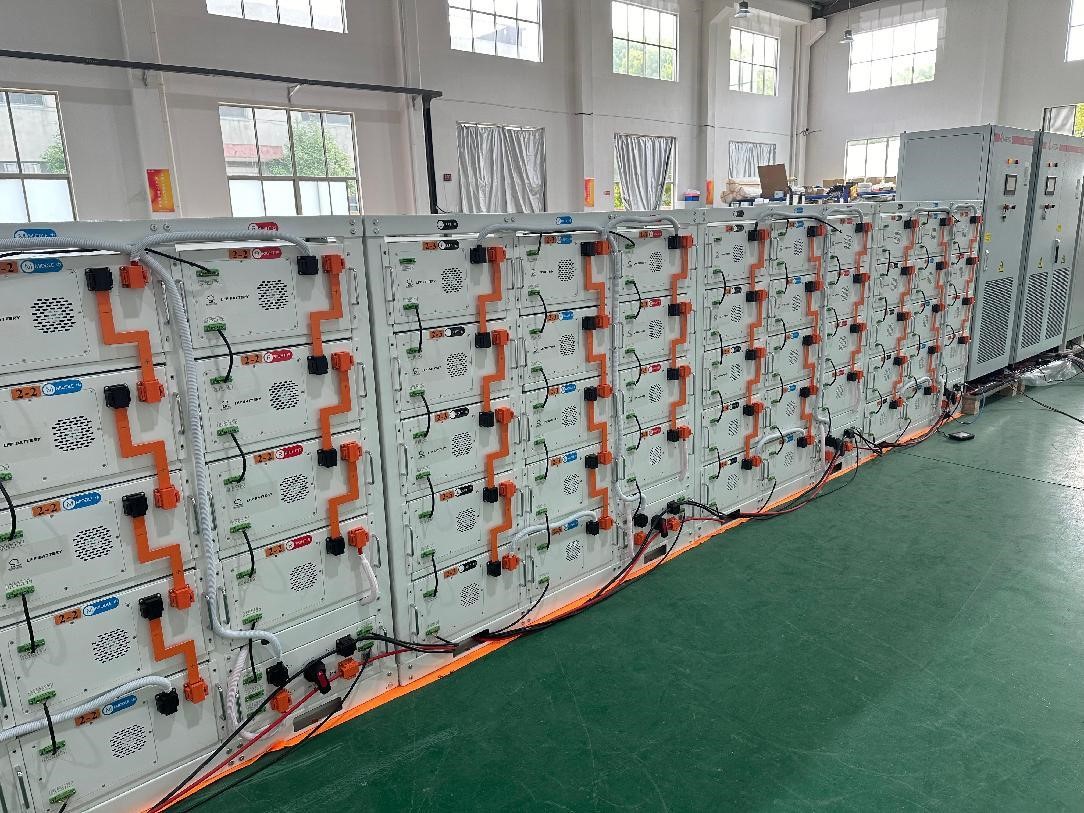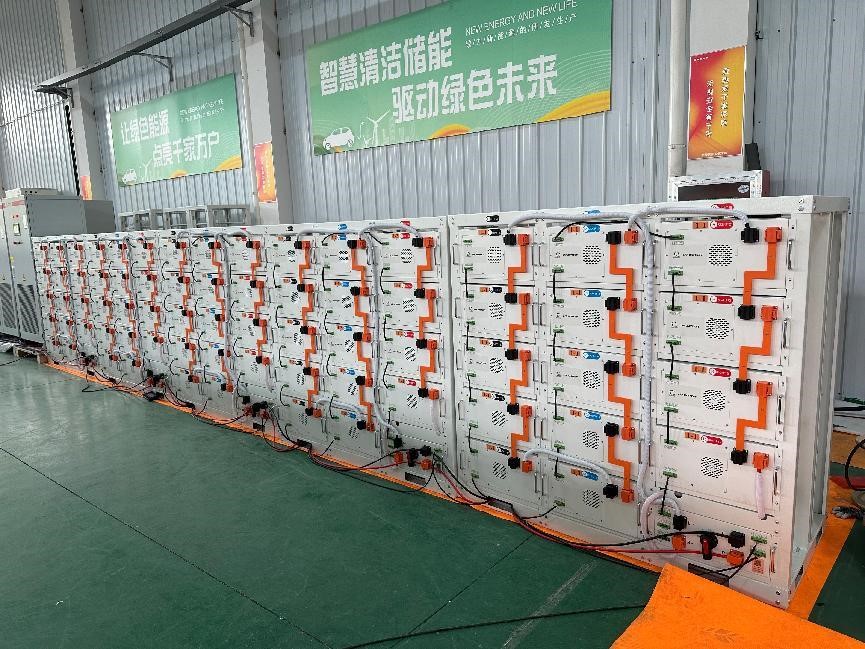Battery Energy Storage System (BESS) is a large-scale battery system based on grid connection, used for storing electricity and energy. It combines multiple batteries together to form an integrated energy storage device.
1. Battery Cell: As a part of the battery system, it converts chemical energy into electrical energy.
2. Battery Module: Composed of multiple series and parallel connected battery cells, it includes the Module Battery Management System (MBMS) to monitor the operation of the battery cells.
3. Battery Cluster: Used to accommodate multiple series-connected modules and Battery Protection Units (BPU), also known as the battery cluster controller. The Battery Management System (BMS) for the battery cluster monitors voltage, temperature, and charging status of the batteries while regulating their charging and discharging cycles.
4. Energy Storage Container: Can carry multiple parallel-connected battery clusters and may be equipped with other additional components for managing or controlling the internal environment of the container.
5. Power Conversion System (PCS): The direct current (DC) generated by the batteries is converted into alternating current (AC) through PCS or bidirectional inverters for transmission to the power grid (facilities or end-users). When necessary, this system can also extract power from the grid to charge the batteries.
What is the working principle of Battery Energy Storage Systems (BESS)?
The working principle of Battery Energy Storage System (BESS) mainly includes three processes: charging, storing, and discharging. During the charging process, BESS stores electrical energy in the battery through an external power source. The implementation can be either direct current or alternating current, depending on system design and application requirements. When there is sufficient power provided by the external power source, BESS converts excess energy into chemical energy and stores it in rechargeable batteries in a renewable form internally. During the storing process, when there is insufficient or no external supply available, BESS retains fully charged stored energy and maintains its stability for future use. During the discharging process, when there is a need to utilize stored energy, BESS releases an appropriate amount of energy according to demand for driving various devices, engines or other forms of loads.
What are the benefits and challenges of using BESS?
BESS can provide various benefits and services to the power system, such as:
1. Enhancing integration of renewable energy: BESS can store excess renewable energy during periods of high generation and low demand, and release it during periods of low generation and high demand. This can reduce wind curtailment, improve its utilization rate, and eliminate its intermittency and variability.
2. Improving power quality and reliability: BESS can provide fast and flexible response to voltage and frequency fluctuations, harmonics, and other power quality issues. It can also serve as a backup power source and support black start function during grid outages or emergencies.
3. Reducing peak demand: BESS can charge during off-peak hours when electricity prices are low, and discharge during peak hours when prices are high. This can reduce peak demand, lower electricity costs, and delay the need for new generation capacity expansion or transmission upgrades.
4. Lowering greenhouse gas emissions: BESS can decrease reliance on fossil fuel-based generation, especially during peak periods, while increasing the share of renewable energy in the power mix. This helps reduce greenhouse gas emissions and mitigate the impacts of climate change.
However, BESS also faces some challenges, such as:
1. High cost: Compared to other energy sources, BESS is still relatively expensive, especially in terms of capital costs, operation and maintenance costs, and lifecycle costs. The cost of BESS depends on many factors such as battery type, system size, application, and market conditions. As technology matures and scales up, the cost of BESS is expected to decrease in the future but may still be a barrier to widespread adoption.
2. Safety issues: BESS involves high voltage, large current, and high temperature which pose potential risks such as fire hazards, explosions, electric shocks etc. BESS also contains hazardous substances such as metals, acids and electrolytes which can cause environmental and health hazards if not handled or disposed properly. Strict safety standards, regulations and procedures are required for ensuring safe operation and management of BESS.
5. Environmental impact: BESS may have negative impacts on the environment including resource depletion, land use issues water usage problems waste generation,and pollution concerns.BESS requires significant amounts of raw materials like lithium,cobalt,nickel,copper etc.,which are scarce globally with uneven distribution.BESS also consumes waterand land for mining manufacturing installation,and operation.BESS generates wasteand emissions throughout its lifecycle that could affect air water soil quality.Environmental impacts need to be considered by adopting sustainable practices to minimize their effects as much as possible.
What are the main applications and use cases of BESS?
BESS is widely used in various industries and applications, such as power generation, energy storage facilities, transmission and distribution lines in the power system, as well as electric vehicle and marine systems in the transportation sector. It is also utilized in battery energy storage systems for residential and commercial buildings. These systems can meet the storage needs of surplus energy and provide backup capacity to alleviate overloading on transmission and distribution lines while preventing congestion in the transmission system. BESS plays a crucial role in micro grids, which are distributed power networks connected to the main grid or operating independently. Independent micro grids located in remote areas can rely on BESS combined with intermittent renewable energy sources to achieve stable electricity generation while helping to avoid high costs associated with diesel engines and air pollution issues. BESS comes in various sizes and configurations, suitable for both small-scale household equipment and large-scale utility systems. They can be installed at different locations including homes, commercial buildings, and substations. Additionally, they can serve as emergency backup power sources during blackouts.
What are the different types of batteries used in BESS?
1. Lead-acid batteries are the most widely used type of battery, consisting of lead plates and sulfuric acid electrolyte. They are highly regarded for their low cost, mature technology, and long lifespan, mainly applied in areas such as starting batteries, emergency power sources, and small-scale energy storage.
2. Lithium-ion batteries, one of the most popular and advanced types of batteries, consist of positive and negative electrodes made from lithium metal or composite materials along with organic solvents. They have advantages such as high energy density, high efficiency, and low environmental impact; playing a crucial role in mobile devices, electric vehicles, and other energy storage applications.
3. Flow batteries are rechargeable energy storage devices that operate using liquid media stored in external tanks. Their characteristics include low energy density but high efficiency and long service life.
4. In addition to these options mentioned above,there are also other types of BESS available for selection such as sodium-sulfur batteries,nickel-cadmium batteries,and super capacitors; each possessing different characteristics and performance suitable for various scenarios.
Post time: Nov-22-2024


